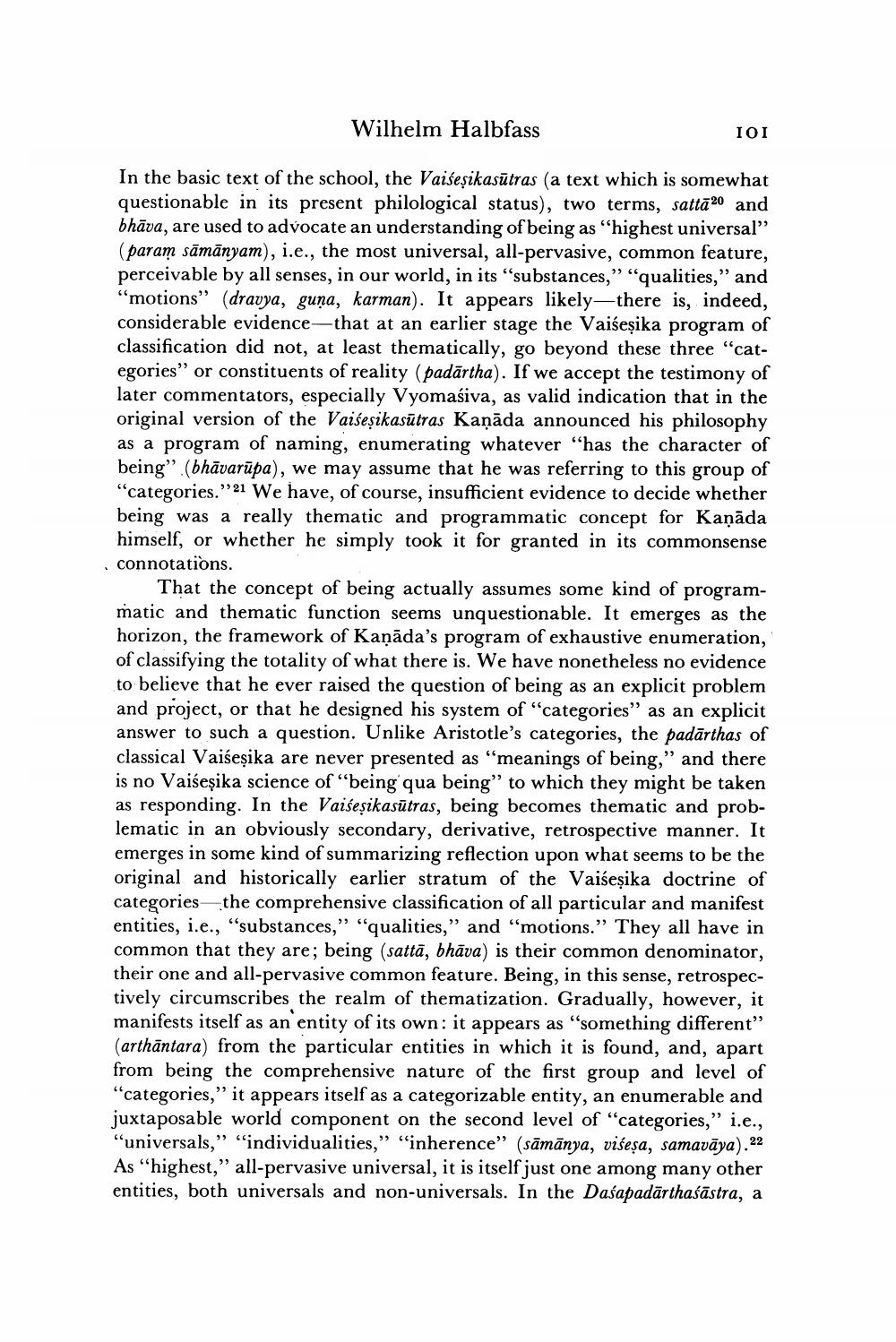________________
Wilhelm Halbfass
IOI
In the basic text of the school, the Vaiseșikasūtras (a text which is somewhat questionable in its present philological status), two terms, sattā20 and bhāva, are used to advocate an understanding of being as "highest universal" (param sāmānyam), i.e., the most universal, all-pervasive, common feature, perceivable by all senses, in our world, in its substances," "qualities," and “motions" (dravya, guņa, karman). It appears likely—there is, indeed, considerable evidence—that at an earlier stage the Vaiseșika program of classification did not, at least thematically, go beyond these three "categories” or constituents of reality (padārtha). If we accept the testimony of later commentators, especially Vyomaćiva, as valid indication that in the original version of the Vaiseșikasūtras Kaņāda announced his philosophy as a program of naming, enumerating whatever “has the character of being" (bhāvarūpa), we may assume that he was referring to this group of "categories.”21 We have, of course, insufficient evidence to decide whether being was a really thematic and programmatic concept for Kaņāda himself, or whether he simply took it for granted in its commonsense connotations.
That the concept of being actually assumes some kind of programmatic and thematic function seems unquestionable. It emerges as the horizon, the framework of Kaņāda's program of exhaustive enumeration, of classifying the totality of what there is. We have nonetheless no evidence to believe that he ever raised the question of being as an explicit problem and project, or that he designed his system of "categories” as an explicit answer to such a question. Unlike Aristotle's categories, the padārthas of classical Vaiseșika are never presented as "meanings of being," and there is no Vaiseșika science of being qua being” to which they might be taken as responding. In the Vaiseșikasūtras, being becomes thematic and problematic in an obviously secondary, derivative, retrospective manner. It emerges in some kind of summarizing reflection upon what seems to be the original and historically earlier stratum of the Vaiseșika doctrine of categories-the comprehensive classification of all particular and manifest entities, i.e., "substances," "qualities," and "motions." They all have in common that they are; being sattā, bhāva) is their common denominator, their one and all-pervasive common feature. Being, in this sense, retrospectively circumscribes the realm of thematization. Gradually, however, it manifests itself as an entity of its own: it appears as "something different" (arthāntara) from the particular entities in which it is found, and, apart from being the comprehensive nature of the first group and level of "categories,” it appears itself as a categorizable entity, an enumerable and juxtaposable world component on the second level of "categories," i.e., "universals," "individualities," "inherence" (sāmänya, višesa, samavāya).22 As "highest,” all-pervasive universal, it is itself just one among many other entities, both universals and non-universals. In the Daśapadārthaśāstra, a




